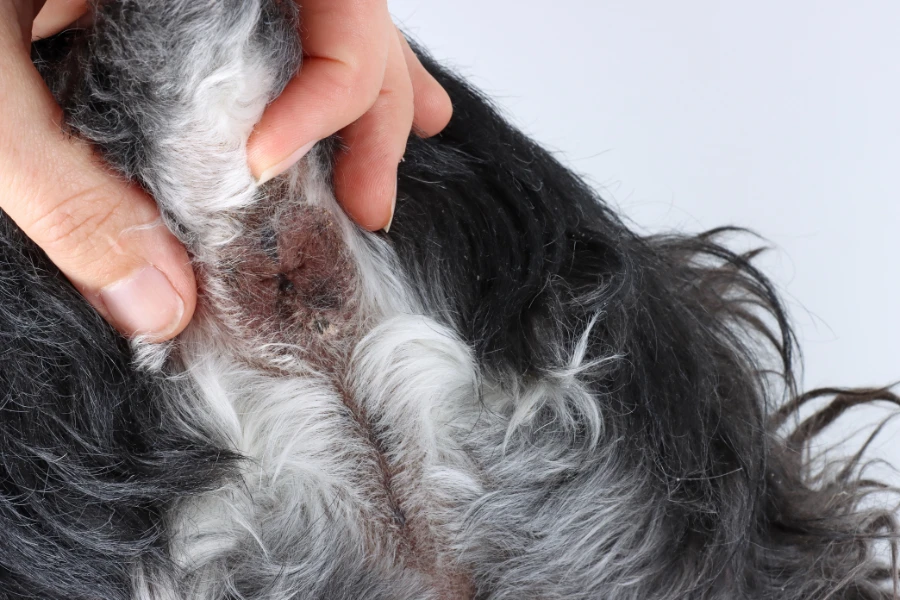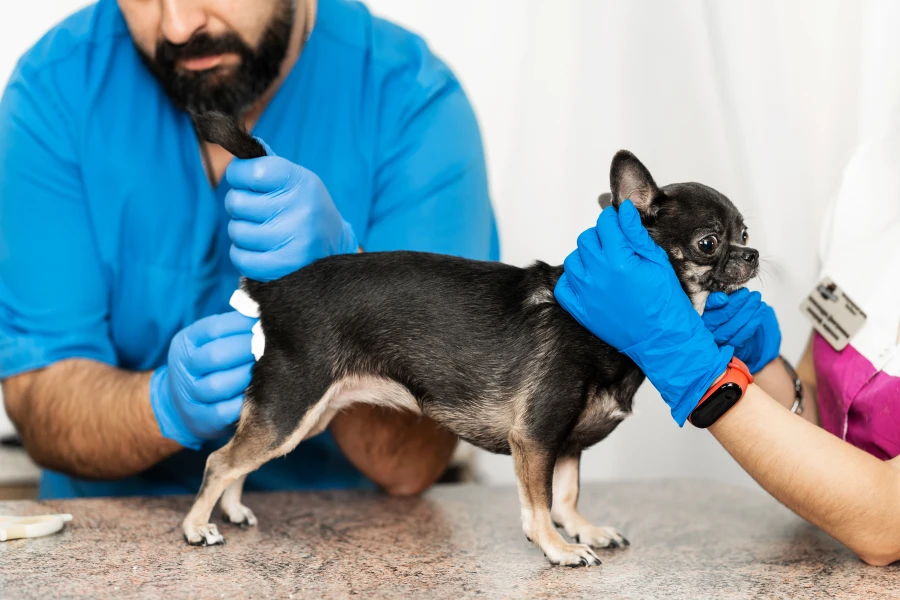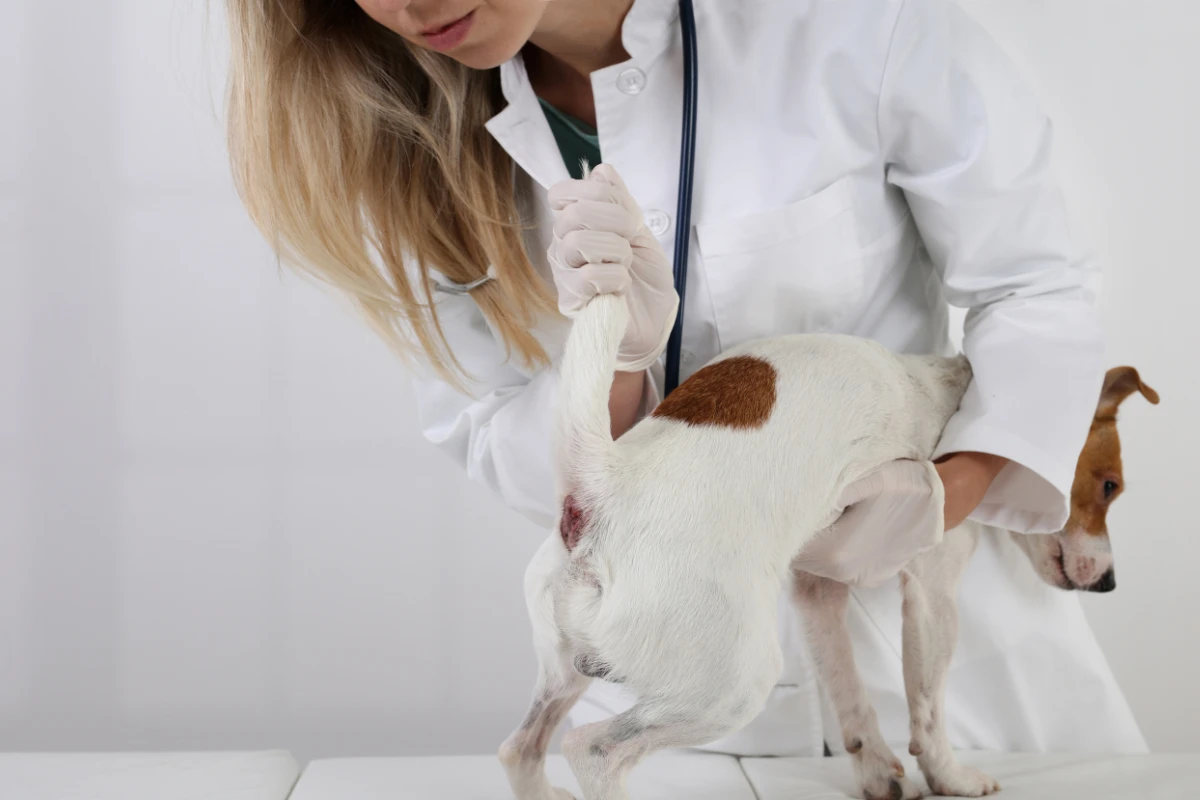Dealing with your furry friend’s anal gland issue can be stressful and quite confusing. Did you know that this common canine health problem could end up needing surgical removal? This article is here to guide you through the complexities of dog anus gland removal, including the costs involved, signs of problems, the recovery process, and potential risks.
Don’t worry; we’ll make this ‘ruff’ topic easy to understand – let’s dive in!
Key Takeaways
- Dog anus gland removal surgery can cost between $1,000 and $2,000, with factors such as the size of the dog and the location of the veterinarian affecting the price.
- Postoperative care is crucial for a smooth recovery after anal gland removal surgery and may involve administering pain medication, monitoring for signs of infection, and preventing licking of the wound.
- Potential complications following anal gland removal include short-term issues like infection and continued scooting, as well as long-term problems like fecal incontinence or stricture development. These complications are rare but should be considered.
Understanding the Role of Anal Glands in Dogs
Anal glands, also known as anal sacs, are integral to a dog’s well-being. These two tiny, grape-sized pouches rest just beneath the surface of the skin on either side of your dog’s anus.
Dogs utilize these glands for communication with other canines and marking their territory. Each time your furry friend defecates or is extremely anxious or frightened, some fluid gets squeezed out onto their feces.
Even though these small sacs play a vital role in a dog’s life, they can sometimes generate problems such as discomfort and infection that seriously impact the health of your pet. Regular vet check-ups help spot any inflammation, obstruction, or tumors at an early stage for prompt management and care.
Ignoring anal gland issues could lead to chronic anal gland problems, which might necessitate surgical removal or an ‘anal capsulectomy.’ An understanding of these crucial glands aids every responsible pet owner in ensuring their dogs’ comfort and overall health.
Signs Your Dog May Have Anal Gland Issues
As a diligent dog owner, noticing changes in your pet’s behavior can be crucial in the early detection of anal gland problems. Here are some signals to look out for:
- Tail Chasing: Dogs might spin around and chase their tails due to the discomfort from their anal glands.
- Scooting: You may observe your dog sliding its rear end along the floor as if attempting to scratch an itch.
- Crying Out: If your dog yelps when touched near the rear area, it could indicate an anal gland issue.
- Excessive Licking: Dogs with anal gland issues often lick their rear excessively to alleviate the pain or irritation.
The Process of Anal Sac Gland Removal
Anal sac gland removal is a surgical procedure that your pet may undergo if encountering severe anal gland issues. Here’s how the process typically goes:
- Your dog undergoes pre-surgical bloodwork to ensure general anesthesia can be safely administered.
- The veterinary surgeon begins by putting the dog under anesthesia for the comfort of your pet and ease of the procedure.
- An antiseptic scrub solution cleanses the surgical site to prevent potential infections.
- Then, the vet employs specialized tools to drain fluid from the anal sacs prior to removal.
- Once drained, they carefully make incisions above these glands, avoiding nerve damage and ensuring minimal discomfort after the surgery.
- Each gland is then cautiously removed using meticulous techniques to avoid any complications like fecal incontinence or tissue damage.
- Soon after removing them, they seal up these incisions with skin sutures, which are usually buried beneath top layers of skin.
Dog Anus Gland Removal Cost
The cost of dog anus gland removal surgery can range from $1,000 to $2,000. The price can be affected by factors such as the size of your dog, the location of the veterinarian, and the type of anesthesia used during the procedure.
Larger dogs tend to have higher costs due to needing more anesthesia and longer recovery times. Additionally, veterinarians in urban areas often charge more than those in rural areas.
Keep in mind that general anesthesia is typically more expensive than local anesthesia and can impact the overall cost of the surgery.
What to Expect After Anal Gland Removal
After anal gland removal, your dog will require postoperative care and may have visible stitches.
Postoperative Care
Administering pain medication and antibiotics is crucial for the postoperative care of dogs after anal gland removal surgery. These medications help manage any discomfort and prevent infections.
It is important to prevent your dog from licking the wound, as this can slow down the healing process. Keep a close eye on your dog’s eating and sleeping habits during the recovery period, as any changes could be signs of complications.
Monitoring for signs of infection, such as redness, swelling, or discharge around the surgical site, is also essential. Overall, providing proper postoperative care will ensure a smooth recovery for your furry friend.
Visible Stitches
During anal gland removal surgery in dogs, visible stitches are used to close the incision made by the veterinarian. The appearance and visibility of these stitches can vary depending on factors such as the size of the dog, the type of fur they have, and their individual healing process.
It’s important to note that the stitches may be dissolvable or require removal by a veterinarian. In the days following surgery, it is normal for the stitches to appear red or slightly swollen.
To promote proper healing, it is crucial to keep the stitches clean and dry through diligent wound care.
Potential Complications Following Anal Gland Removal
There are potential short-term and long-term complications that can arise after anal gland removal surgery.

Short-Term Complications
After anal gland removal surgery, dogs may experience a few short-term complications, including:
- Infection at the surgical site
- Continued scooting due to surgical irritation
- Temporary irritation and swelling at the surgical site
- The need to stay at the vet clinic for several hours or overnight after surgery
- A recovery period of around two to four weeks
- Rest and restricted activity to allow proper healing.
Long-Term Complications
Long-term complications can occur after anal gland removal surgery in dogs. These include:
- Fecal incontinence: Rarely, dogs may experience difficulty controlling their bowel movements after the surgery. This can lead to the involuntary passage of feces.
- Fistula formation: In some cases, abnormal connections (fistulas) may develop between the surgical site and adjacent areas. These can cause persistent discharge or infection.
- Stricture development: Scar tissue formation at the surgical site can narrow the anal opening, resulting in difficulties during defecation.
The Impact of Anal Gland Removal on Your Dog
Anal gland removal does not typically affect a dog’s territory-marking behavior and may cause some pain during the recovery period.
Does Removal Affect Territory Marking?
Dogs use their anal glands to mark their territory with a strong-smelling fluid during defecation. However, removing these glands can affect a dog’s ability to communicate through pheromones.
This means that after the removal, your dog may not be able to mark its territory as effectively as before. Keep this in mind if you’re considering removing your dog’s anal glands, and consult with your veterinarian about potential alternatives or behavior modifications that can help compensate for this change.
Understanding the impact of territory marking is crucial for responsible pet owners.
Is It Painful for the Dog?
Dog owners may wonder whether anal gland removal surgery is painful for their pets. While every dog’s experience may vary, it is important to note that veterinary surgeons take measures to minimize pain and discomfort during and after the procedure.
General anesthesia is administered to ensure the dog remains unconscious and free from pain throughout the surgery. Additionally, postoperative care includes pain management programs, which typically involve anti-inflammatory drugs, oral analgesics, or epidural analgesia to keep the dog comfortable during recovery.
By addressing any potential sources of discomfort, anal gland removal can ultimately provide relief for dogs suffering from persistent anal gland issues.
The Consequences of Not Removing Infected Anal Glands
Ignoring infected anal glands in dogs can lead to serious consequences for their health and well-being. If left untreated, the infection can worsen and spread, causing discomfort and pain for your furry friend.
Infected anal glands may result in abscesses or even rupture, leading to further complications like systemic infections. These issues could require more invasive treatments, such as surgical removal of the anal sacs or additional medications to address the infection.
It’s vital to address infected anal glands promptly to prevent these potential complications and ensure the overall health of your dog.

Pros and Cons of Anal Gland Removal
Anal gland removal can provide relief from anal gland problems, but it also carries the risk of complications and a long recovery time. Learn more about the benefits and drawbacks of this procedure to make an informed decision for your furry friend.
So keep reading to find out!
Relief from Anal Gland Problems
Anal gland problems in dogs can be a source of discomfort, pain, itching, and even infection. However, the good news is that anal gland removal surgery, also known as anal capsulectomy, can provide relief from these symptoms.
This surgical procedure aims to eliminate the underlying issue causing the problem and decrease the risk of self-trauma resulting from excessive licking or chewing of the anal area.
By removing the anal glands, it can also reduce the likelihood of recurrent anal gland problems in your furry friend. After a recovery period of around two to four weeks, during which your dog may need to limit their activity and rest for proper healing, you should notice a significant improvement in their overall comfort and well-being.
Risk of Complications
Complications after anal gland removal surgery in dogs are rare but can occur. Short-term complications may include infection, continued scooting due to surgical irritation, and temporary swelling at the surgical site.
These issues are usually manageable with proper veterinary care. Long-term complications, although uncommon, may involve fecal incontinence, fistula formation (abnormal connections between organs), or the development of a stricture (narrowing of a passageway).
It’s important to note that these complications can be addressed by your veterinarian if they arise.
Long Recovery Time
The recovery time after anal gland removal surgery can be quite lengthy. It depends on the size of your dog, with larger dogs typically needing a longer recovery period. After the surgery, you will need to provide postoperative care by giving your dog pain medication and closely monitoring their eating and sleeping habits.
Short-term complications like temporary irritation and swelling at the surgical site can also prolong the recovery time. While rare, there is also a possibility of long-term complications that could contribute to a longer recovery period.
Conclusion
In conclusion, understanding the cost and factors involved in dog anus gland removal is crucial for responsible pet owners. While the procedure can be expensive, it may be necessary to alleviate discomfort and prevent more serious health issues.
By being aware of signs indicating anal gland problems and seeking veterinary care promptly, owners can ensure their furry friends receive appropriate treatment and enjoy a healthier life ahead.

